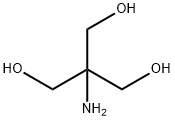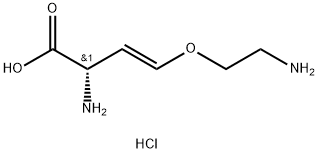Pemoline
Synonym(s):2-Amino-5-phenyl4(5H)-oxazolone;Phenylisohydantoin
- CAS NO.:2152-34-3
- Empirical Formula: C9H8N2O2
- Molecular Weight: 176.17
- MDL number: MFCD00083197
- EINECS: 218-438-8
- SAFETY DATA SHEET (SDS)
- Update Date: 2023-04-23 13:52:06

What is Pemoline?
Absorption
Pemoline is rapidly absorbed from the gastrointestinal tract
Toxicity
Side effects include insomnia, anorexia, stomach ache, skin rashes, increased irritability, mild depression, nausea, dizziness, headache, drowsiness, and hallucinations
Chemical properties
White Solid
Originator
Deltamine,Aron,France,1960
The Uses of Pemoline
A CNS stimulant. Controlled Substance
Indications
For treatment of Attention Deficit Hyperactivity Disorder (ADHD)
Background
In 2005, the Food and Drug Administration (FDA) withdrew approval for pemoline. In March 2005, Abbott Laboratories (Cylert marketer) had discontinued the production of Cylert arguing economic reasons.
Definition
ChEBI: A member of the class of 1,3-oxazoles that is 1,3-oxazol-4(5H)-one which is substituted by an amino group at position 2 and by a phenyl group at position 5. A central nervous system stimulant, it was used to treat hyperactivity disorders in children, but withdrawn from use following reports of serious hepatotoxicity.
Manufacturing Process
It is preferably prepared by reacting mandelic acid ethyl ester with guanidine in boiling alcoholic solution whereby it is obtained as difficultly soluble precipitate with a yield of 90%.
This compound is a white, crystalline compound melting at 256°-257°C with decomposition. It is readily soluble in concentrated aqueous alkali hydroxide solutions and in concentrated aqueous mineral acids.
brand name
Cylert (Abbott).
Therapeutic Function
Psychostimulant
World Health Organization (WHO)
Pemoline was introduced in 1975 for the treatment of attentiondeficit disorder. Because of its central stimulating effects it has also been used in weight control in combination with anorectic agents, laxatives.
General Description
Pemoline, 2-amino-5-phenyl-4(5H)-oxazolone (Cylert), hasa unique structure.
The compound is described as having an overall effect onthe CNS like that of methylphenidate. Pemoline requires 3to 4 weeks of administration, however, to take effect. A partialexplanation for the delayed effect may be that one of theactions of the agent, as observed in rats, is to increase therate of synthesis of DA.
Biological Activity
Long-acting central stimulant that induces self-injurious behavior in rats. Acts as an indirect monoamine agonist.
Pharmacokinetics
Pemoline belongs to the group of medicines called central nervous system (CNS) stimulants. It is used to treat attention deficit hyperactivity disorder (ADHD). Pemoline stimulates the brain, probably by affecting neurotransmitters, the chemicals in the brain that nerves use to communicate with each other.
Metabolism
Hepatic
Properties of Pemoline
| Melting point: | 255-256°C |
| Boiling point: | 307.77°C (rough estimate) |
| Density | 1.2662 (rough estimate) |
| refractive index | 1.5570 (estimate) |
| storage temp. | Store at RT |
| solubility | DMSO: soluble28mg/mL |
| form | solid |
| pka | pKa 10.5 (Uncertain) |
| color | white |
| CAS DataBase Reference | 2152-34-3(CAS DataBase Reference) |
| NIST Chemistry Reference | 4(5H)-oxazolone, 2-amino-5-phenyl-(2152-34-3) |
Safety information for Pemoline
| Signal word | Warning |
| Pictogram(s) |
 Exclamation Mark Irritant GHS07 |
| Precautionary Statement Codes |
P261:Avoid breathing dust/fume/gas/mist/vapours/spray. P264:Wash hands thoroughly after handling. P264:Wash skin thouroughly after handling. P280:Wear protective gloves/protective clothing/eye protection/face protection. P301+P312:IF SWALLOWED: call a POISON CENTER or doctor/physician IF you feel unwell. |
Computed Descriptors for Pemoline
New Products
4-Fluorophenylacetic acid 4-Methylphenylacetic acid N-Boc-D-alaninol N-BOC-D/L-ALANINOL Tert-butyl bis(2-chloroethyl)carbamate 3-Morpholino-1-(4-nitrophenyl)-5,6-dihydropyridin- 2(1H)-one Furan-2,5-Dicarboxylic Acid Tropic acid S-2-CHLORO PROPIONIC ACID ETHYL ISOCYANOACETATE 2-Bromo-1,3-Bis(Dimethylamino)Trimethinium Hexafluorophosphate (6-METHYL-[1,3]DITHIOLO[4,5-b]QUINOXALIN-2-ONE INDAZOLE-3-CARBOXYLIC ACID 4-IODO BENZOIC ACID (2-Hydroxyphenyl)acetonitrile 4-Bromopyrazole 5,6-Dimethoxyindanone 2-(Cyanocyclohexyl)acetic acid 4-methoxy-3,5-dinitropyridine 2-aminopropyl benzoate hydrochloride 1-(4-(aminomethyl)benzyl)urea hydrochloride diethyl 2-(2-((tertbutoxycarbonyl)amino) ethyl)malonate tert-butyl 4- (ureidomethyl)benzylcarbamate Ethyl-2-chloro((4-methoxyphenyl)hydrazono)acetateRelated products of tetrahydrofuran








You may like
-
 2033-24-1 98%View Details
2033-24-1 98%View Details
2033-24-1 -
 42831-50-5 5-METHYLISOXAZOLE-4-CARBOXYLIC ACID 98%View Details
42831-50-5 5-METHYLISOXAZOLE-4-CARBOXYLIC ACID 98%View Details
42831-50-5 -
 1975-50-4 98%View Details
1975-50-4 98%View Details
1975-50-4 -
 2-HYDROXY BENZYL ALCOHOL 98%View Details
2-HYDROXY BENZYL ALCOHOL 98%View Details
90-01-7 -
 2-Chloro-1,3-Bis(Dimethylamino)Trimethinium Hexafluorophosphate 221615-75-4 98%View Details
2-Chloro-1,3-Bis(Dimethylamino)Trimethinium Hexafluorophosphate 221615-75-4 98%View Details
221615-75-4 -
 61397-56-6 CIS BROMO BENZOATE 98%View Details
61397-56-6 CIS BROMO BENZOATE 98%View Details
61397-56-6 -
 14714-50-2 (2-Hydroxyphenyl)acetonitrile 98+View Details
14714-50-2 (2-Hydroxyphenyl)acetonitrile 98+View Details
14714-50-2 -
 118753-70-1 98+View Details
118753-70-1 98+View Details
118753-70-1